Popularization of succulent cultivation medium
1. Garden soil
Garden soil, also known as vegetable garden soil or farmland soil, is soil that has been cultivated and planted with flowers, trees or vegetables. Garden soil is made from garbage, fallen leaves, manure, straw, etc., which are piled and fermented at high temperature. It contains rich humus and has good physical properties. In addition to being used directly for outdoor cultivation of flowers and trees, it is also the main component of the culture soil used for potted flowers. Before preparing the culture soil, it must be exposed to the sun, then finely sieved, and can only be used after being separated into coarse and fine particles. The disadvantage is that the surface is easy to harden when dry, and the ventilation and water permeability are poor when wet, so it cannot be used alone when cultivating succulents.
2. Peat soil
Peat soil refers to soil in some river and lake sedimentary low plains and mountain valleys. Due to long-term accumulation of water and dense aquatic vegetation, a large amount of inadequately decomposed plant residues accumulate and form a peat layer under hypoxic conditions. Peatlands
can be divided into sphagnum peatlands and swamp peatlands. The main difference between these two types of peatlands lies in the different conditions under which peatlands are formed. Generally speaking, plants that rely solely on rainwater form sphagnum peatlands, while plants that rely mainly on surface water form swamp peatlands.
When swamp peatlands are formed, they mainly rely on sufficient surface water. This type of peatland is formed by the accumulation of some reeds, sedge grass, etc. When sphagnum peatlands are formed, their surface has no direct connection with surface water. A special plant, sphagnum moss, always grows on the surface of sphagnum peatlands. Because the cell structure of this plant is very large, it has a strong water holding capacity. Therefore, when it rains, sphagnum plants can raise the surface water level of peatland to several centimeters below its top through their special water holding capacity. The vertical exchange rate of water in sphagnum peatland is quite slow. It generally takes about one day for rainwater to penetrate one meter from the surface, and it may take several weeks for rainwater to reach the bottom of the peatland.
In addition to the sphagnum plants themselves, the conditions for the formation of sphagnum peatland are that the peatland should not be easy to drain, and the environmental climate should be that the precipitation is greater than the evaporation. Pure water without nutrients is the key to the growth of sphagnum plants. The pH value of sphagnum peatland is generally 3 to 4. This growth environment makes it impossible for most plants to grow and reproduce in it, but sphagnum plants can grow in this specific environment. After thousands of years of continuous growth and accumulation, it finally forms the sphagnum peatland that is most suitable as a raw material for horticultural substrates.
Peat soil is a fertile soil with a peat layer of thickness > 50cm, mostly distributed in low-lying areas in cold and humid areas. There may be a 20-30cm thick grass root layer on the surface, below which is a peat layer and a mineral fertile layer, and sometimes there is a humus transition layer below the peat layer. Peat soils are divided into three sub-categories, namely low peat soils, mid-level peat soils and high-level peat soils. The low-lying peat soil subclass is distributed in low wetlands, and its charcoal-making plants are eutrophic, mainly moss herbaceous plants with high ash content, and the organic matter content of the peat layer is mostly 30-70%, with a pH value of 6.0-7.0; the middle-lying peat soil subclass is a transitional type, scattered in the swampy areas of mountain forests, and the charcoal-making plants are mesotrophic trees, sedges, peat mosses, etc., with an organic matter content of 50-80%, and a pH value of 5.0-6.7; the high-lying peat soil subclass is oligotrophic, and the charcoal-making plants are mainly peat mosses, and the water is replenished by atmospheric precipitation. The organic matter content of the peat layer is 60-90%, and the pH value is 4.0-5.0, which is scattered in the shade and wet areas of the mountains, and the area is not too large.
Methods for identifying the quality of peat soil:
1. Look at the weight. The lighter the peat soil of the same package, the better the quality. Because peat soil is mainly generated by grass, leaves, and tree roots under certain conditions, its density is less than that of water and soil. If the water content or soil content of peat soil is high, it will appear heavy.
2. Grab a handful of peat soil and squeeze it for about a minute and then release it. If the peat soil spreads, it is of high quality. If it does not spread, it is not good peat soil.
3. Water washing method. Because peat soil is the final formation of perennial plant humus and has a lot of fiber tissue, good peat soil will leave a lot of fiber after lightly washing with water.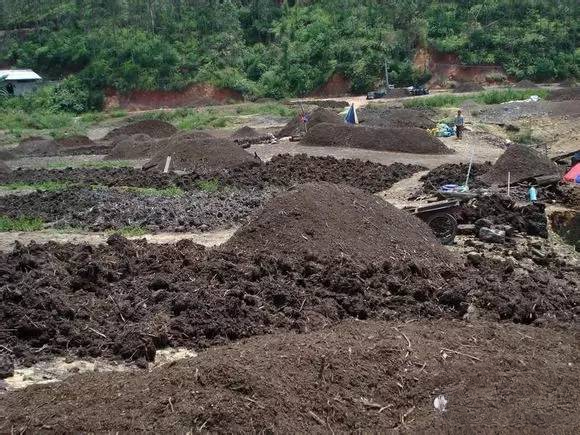
3. Coconut pith
Coconut pith is coconut shell fiber powder, which is a byproduct or waste of processed coconut. It is a pure natural organic medium that falls off during the processing of coconut shell fiber. Coconut pith after processing is very suitable for cultivating plants and is currently a popular gardening medium.
Coconut pith is produced in many tropical and subtropical countries, such as India, Sri Lanka, Malaysia, the Philippines and other countries. Hainan Province also produces a small amount of coconut pith.
Characteristics of coconut pith:
1. Good water retention can fully retain water and nutrients, reduce loss, and is conducive to the absorption of nutrients and water by plant roots during growth. 2.
Good air permeability can prevent plant root corrosion, promote plant root growth, protect the soil, and avoid mud.
3. The slow natural decomposition rate is conducive to extending the service life of the substrate.
4. Low storage and transportation costs. Coconut pith is compressed, has a small storage space, is easy to transport, and greatly reduces storage and transportation costs.
5. The natural state is acidic, with a pH between 4.40 and 5.90. Coconut pith with a low pH is not easy to breed microorganisms, which is conducive to medium cultivation.
6. All materials are natural and organic, free of pathogens and chemical additives, and meet environmental protection requirements. Currently, it is widely used around the world and is a natural and environmentally friendly product that developed countries are committed to promoting.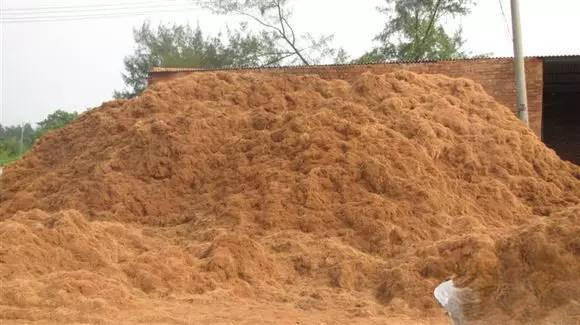
4. Rice husk
charcoal is made from smoked rice husks and can be used as a cultivation medium and soil improvement. Its functions and advantages are as follows:
1. It can enhance heat absorption, increase ground temperature and water temperature, promote plant growth and reduce cold damage.
2. It is loose and porous with good air permeability, which increases the oxygen supply to the roots.
3. It can enhance the water retention capacity of sandy soil and reduce dry damage, and make clay soil soft and reduce wet damage.
4. The main component is silicon dioxide, which is similar to the soil composition and can be regarded as a soil substitute.
5. Although the fertilizer content is not much, it will promote the effectiveness of P, K, Ca, and Mg, especially the dissolution of P and K is relatively large.
6. It has strong adsorption capacity, can absorb toxins, and reduce fertilizer loss and emission.
7. Spreading around plants can prevent the invasion of pests (such as mollusks).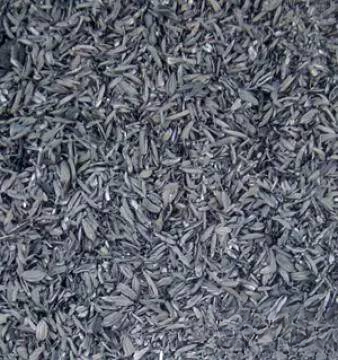
5. Sphagnum
moss Sphagnum moss is a natural moss, also known as peat moss (Herba Sphagni). It is widely used in the cultivation of various orchids and is one of the best materials for planting cultivation substrates.
Moss plants are small green plants with simple structures, consisting of only two parts: stems and leaves. Sometimes they only have flat fronds, without real roots and vascular bundles. Moss plants like dark and humid environments and generally grow on exposed stone walls, or humid forests and swamps.
Soak the dry sphagnum moss in clean water for a period of time before use. The sphagnum moss that absorbs water will gradually recover its vitality and become several times larger in size, and then it can be used.
Hydroponic flower plants: Fill the vase with sphagnum moss and soak the roots of the plants in water. The roots will naturally grow together with the sphagnum moss. Sphagnum moss can produce oxygen in water, help the development of plant roots, and create a more ideal growth environment for the roots than pure nutrient water.
Transplantation: Plant seedlings with sphagnum moss. When they grow up and need to be potted, you can directly put the roots wrapped in sphagnum moss into the pot and fill it with soil. This will allow the plants to safely pass the adaptation period and prevent them from suddenly changing their growth environment and causing them to become uncomfortable or even die.
Grafting: Wrap the fresh cut of the plant with sphagnum moss and wrap it with a layer of plastic to promote wound healing as soon as possible. Or wrap sphagnum moss in the part where rooting is required, which can also achieve twice the result with half the effort.
Features
Pure natural product, clean and free of bacteria, can reduce the occurrence of diseases and pests;
good water retention and drainage performance;
has excellent ventilation performance;
not easy to corrupt, can be used for a long time, and it is not necessary to renew all the materials when changing pots;
can be used alone or mixed with other substrates.
Use
Used alone, pure sphagnum moss can be used to cultivate most carnivorous plants;
mixed with peat, perlite, etc., to improve the air permeability and moisture retention of the substrate;
local application, it can be placed on the upper part of the substrate to keep it moist, or on the bottom of the pot to prevent the loss of fine particles of the substrate, improve the moisture retention of the substrate, and enhance the air permeability of the bottom of the pot.
Precautions:
It needs to be fully absorbed with water before use (it can be soaked in water);
when using pure sphagnum moss for cultivation, the sphagnum moss can be cut short to facilitate future transplanting.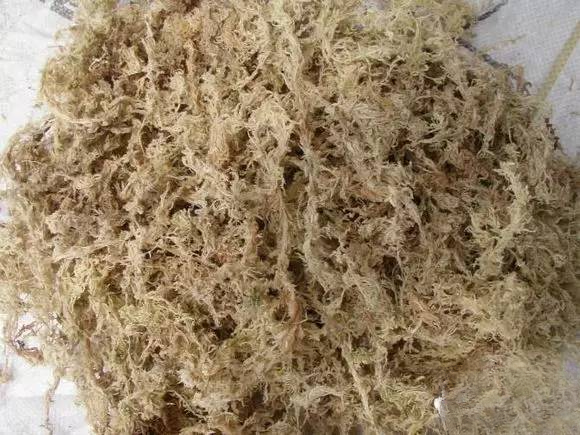
6. Kanuma
soil is produced in volcanic areas. It is formed from the lower volcanic soil and is in the form of volcanic sand. The pH value is acidic, and it has high permeability, water storage capacity and air permeability. The size of Kanuma soil is not very consistent (there are large, medium and fine particles), and there are many holes. This soil is mainly used for bonsai, orchids, alpine flowers, etc.
Whether it is used for professional production or family cultivation or soil improvement, Kanuma soil has a good effect. It is especially suitable for plants that are afraid of moisture and resistant to barrenness, such as various bonsai, orchids, alpine flowers, etc. Kanuma soil can be used alone or mixed with other media such as peat, leaf mold, Akadama soil, etc. The recommended mixing ratio is 30% for grass flowers and foliage plants, 50% for bulb flowers, and 60% for orchids.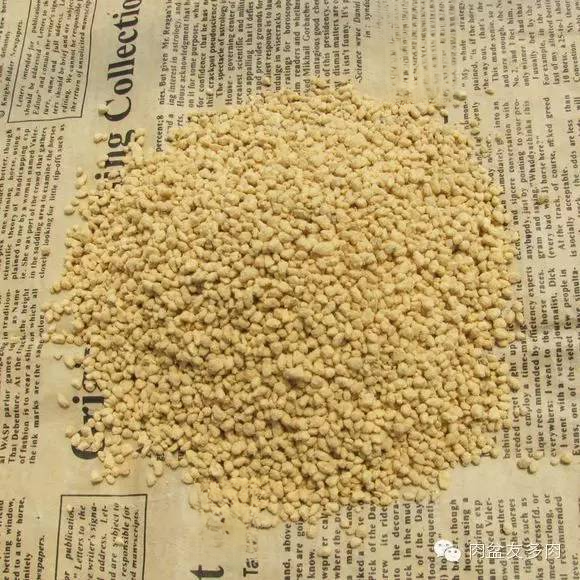
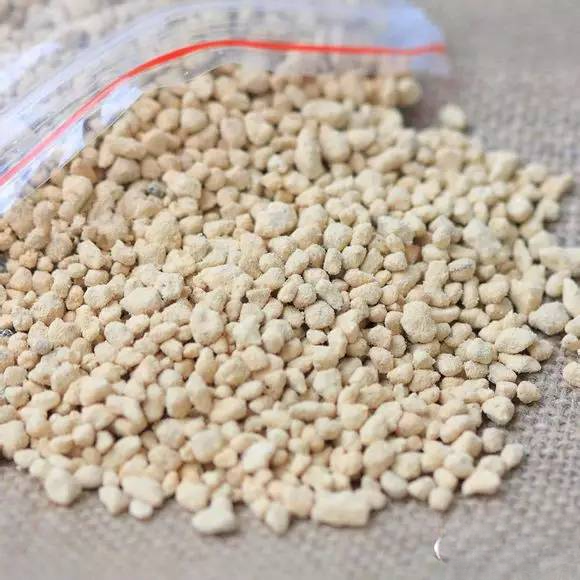
7. Akadama
Japan has abundant resources for horticultural cultivation media, especially volcanic lava. Due to frequent volcanic activities, Japan enjoys rich volcanic resources. The volcanic ash, volcanic rock and pumice left over from volcanic eruptions in ancient times are piled up near the volcano. Using this unique resource, Japan has developed a wealth of horticultural cultivation medium products, of which Akadama and Kanuma soil cultivation media are two representative ones.
Akadama is formed by the accumulation of volcanic ash and is the most widely used soil medium. This is also the most widely used cultivation medium in Japan. It is a highly permeable volcanic mud with dark red round particles, no harmful bacteria, and a slightly acidic pH value. Its shape is conducive to water storage and drainage. The percentage of mixing with other substances is generally 30-35%, which is higher than peat. The effect is comparable to peat.
Specifications: Large particles: 6-12mm Medium particles: 2-6mm Fine particles: 1-2mm
Application: Large particles are suitable for large-scale gardening or paving; medium particles are suitable for various plant pots, and can be called "universal soil", especially for the cultivation of succulent plants such as cacti, Chinese orchids, etc.; fine particles are the best choice for lawn planting and gardening plant seedlings, and are generally mixed with other media such as leaf mold and Kanuma soil.
Ingredients: The following are the content determination>

8. Vermiculite
Vermiculite is a natural, non-toxic mineral that expands under high temperature. It is called vermiculite because it is bent when it loses water and expands under heat, and its shape resembles leeches. After high-temperature roasting, the volume of vermiculite flakes can quickly expand 6-20 times, and the specific gravity after expansion is 60-180kg/m3, which has strong thermal insulation performance. It is a relatively rare mineral and belongs to silicate. Its crystal structure is monoclinic, and it looks like mica in appearance. Vermiculite is produced when a certain granite is hydrated. It is generally produced at the same time as asbestos. Because vermiculite has the ability to exchange ions, it has a great effect on soil nutrition. In 2000, the total output of vermiculite in the world exceeded 500,000 tons. The main producing countries are China, South Africa, Australia, Zimbabwe and the United States.
The main chemical formula of vermiculite is (Mg, Ca) 0.7 (Mg, Fe, Al) 6.0 [(Al, Si) 8.0] (OH4.8H2O). The common chemical formula is (Mg2.36Fe0.48Al0.16) (Si2.72Al1.28O10(OH)2) (Mg0.32(H2O)4.32).
Vermiculite can be divided into vermiculite flakes and expanded vermiculite according to its stage, and can be divided into golden vermiculite, silvery white vermiculite and milky white vermiculite according to its color.
In agriculture, expanded vermiculite can be used as soil conditioner, plant growth agent and feed additive.
Used as soil conditioner: Good cation exchange and adsorption can improve soil structure, store water and retain moisture, increase soil permeability and water content, and turn acidic soil into neutral soil; vermiculite can also play a buffering role, hinder the rapid change of pH value, slowly release fertilizer in crop growth medium, and allow slightly excessive use of fertilizer without causing harm to plants; experiments show that adding 0.5-1% expanded vermiculite to compound fertilizer can increase crop yield by 15-20%.
Used as plant growth agent: expanded vermiculite can provide K, Mg, Ca, Fe and trace amounts of Mn, Cu, Zn and other elements to crops. Experiments show that adding 0.5-1% expanded vermiculite to compound fertilizer can increase crop yield by 15-20%.
In horticulture, expanded vermiculite can be used in flower, vegetable, fruit cultivation, seedling cultivation, etc. In addition to being used as potting soil and regulator, it is also used in soilless cultivation. As a nutrient base for planting potted trees and commercial seedling beds, it is particularly beneficial for plant transplanting and transportation. Vermiculite can effectively promote the growth of plant roots and the stable development of seedlings. It can provide the necessary water and nutrients for plant growth for a long time and keep the root temperature stable.

9.
Pumice is also called light stone or floating rock. It has a small bulk density (0.3-0.4). It is a porous, lightweight glassy acidic volcanic eruptive rock (a densely porous glassy lava formed by the condensation of molten magma with volcanic eruptions). It is named because of its many pores, light weight, bulk density less than 1 gram/cubic centimeter, and ability to float on the water. Its pore volume accounts for more than 50% of the rock volume. The surface of pumice is rough, the particle bulk density is 450kg/m3, the loose bulk density is about 250kg/m3, the porosity of natural pumice is 7l.8-81%, and the water absorption rate is 50-60%. It is characterized by light weight, high strength, acid and alkali resistance, corrosion resistance, no pollution, no radioactivity, and is an ideal natural, green, and environmentally friendly product.
Pumice is mainly used as a breathable and water-retaining material and a soil loosening agent in horticultural planting. Its good water absorption function can replenish the water needed by plants. Pumice is mainly used as a drainage material in roof and garage roof drainage.


10. Diatomaceous
earth Diatomaceous earth is a siliceous rock with countless pores on its surface. It can absorb and decompose odors in the air and has the functions of humidity control and deodorization. It is mainly distributed in China, the United States, Denmark, France, the Soviet Union, Romania and other countries. It is a biological siliceous sedimentary rock, which is mainly composed of the remains of ancient diatoms. (Diatoms are the earliest single-cell algae that appeared on the earth. They live in seawater or lake water. Their bodies are extremely small, generally only a few microns to more than ten microns. Diatoms can photosynthesize and make their own organic matter. They often grow and reproduce at an astonishing speed. Its remains are deposited to form diatomaceous earth.) Its chemical composition is mainly SiO2, which can be expressed as SiO2·nH2O. It contains a small amount of Al2O3, Fe2O3, CaO, MgO, etc. It also contains a small amount of organic matter. The mineral composition is opal and its variants. The diatomite reserves are 320 million tons, and the prospective reserves are more than 2 billion tons, mainly concentrated in East China and Northeast China. Among them, the provinces with larger scale and more work are Jilin, Zhejiang, Yunnan, Shandong, Sichuan and other provinces. Although the distribution is wide, the high-quality soil is only concentrated in Changbai, Jilin and Yunnan. Most of the other deposits are grade 3~4 soil, which cannot be directly processed and utilized due to the high impurity content.
The role of diatomaceous earth in gardening:
1. Soil conditioner: It has a neutral pH value, is non-toxic, has good suspension performance, and has strong adsorption performance. It can moisturize the soil, loosen the soil, prolong the efficacy of medicine and fertilizer, and promote the growth of crops.
2. Pesticide: Diatomaceous earth can kill insects because each fine particle of its powder has a very sharp edge. When it comes into contact with pests, it can pierce the surface of the pests and even enter the pests. It can not only cause disorders in the pests' respiratory, digestive, reproductive, and movement systems, but also absorb 3 to 4 times its own weight of water, causing the pests' body fluids to drop sharply, and die when they lose more than 10% of their body fluids. Diatomaceous earth will also absorb the outer wax of the insect's body, causing the insect to dehydrate and die. Diatomaceous earth kills insects mechanically, not chemically, so pests will never develop resistance to it. More importantly, diatomaceous earth is non-toxic and harmless to higher animals (including humans), so it can also be used as a pet insecticide.
Powdered diatomaceous earth can be diluted and sprayed on plants.
The more diatoms there are in diatomite, the less impurities there are, the whiter the color is, and the lighter the quality is 


.

11. Zhijinshi
Zhijinshi has a waxy yellow color, smooth surface and solid structure. It is a volcanic stone. After a volcanic eruption, a large amount of gas and heat are released. The porous, light, and water-retaining stone is formed by a special temperature. It is sterilized at 250 degrees and processed by high-tech technology. Therefore, it has the characteristics of light weight, good drainage, moisture retention and air permeability. After Zhijinshi is wetted with water, its color is golden yellow, which complements the elegant orchid plant, so it is also called orchid stone.



12. Hyuga Stone
is a type of volcanic pumice. It is a porous and lightweight gardening soil produced in Hyuga City, Miyazaki Prefecture, Japan. It looks a bit like Kanuma soil and is very dry like other pumice. It is a light stone that has been sterilized at high temperature and can improve the drainage of the soil. It is widely used in Korea. Mixing
Hyuga Stone with other cultivation soils can improve the drainage of the medium. It is less likely to crush than Kanuma soil. It is suitable for plant varieties that do not like to repot or do not need to repot. It can also be used as a surface decoration soil for potted plants. It is also suitable as part of the soil for cuttings. In addition to being used for orchids, bonsai, ornamental palms, cacti, and aquatic plants, it is also suitable as a general soil for flower and grass cultivation. It is an additive soil. Using too much or completely will affect the stability of the plant.
13. Kiryu sand, Fuji sand
and Hyuga stone are named in the same way. Kiryu sand and Fuji sand are volcanic sands, named after the origin of Kiryu and Mount Fuji in Japan. They contain a lot of Fe2O3 and are in the form of hard stone sand. They are used for planting orchids, succulents, etc. This medium has good permeability, water storage, circulation and drainage. It is suitable for plants such as bonsai and alpine flowers.
Japan has abundant horticultural cultivation medium resources, especially volcanic lava. Due to frequent volcanic activities, Japan enjoys rich volcanic resources. Volcanic ash, volcanic rocks and pumice left over from volcanic eruptions in ancient times are accumulated near volcanoes. Using this unique resource, Japan has developed a wealth of horticultural cultivation medium products, and Akadama soil and Kanuma soil cultivation media are two representative ones. In addition, there are Kiryu sand, Fuji sand, Platinum stone, Hyuga stone and Uekin stone. In Japan, this type of medium product is used alone or mixed with other media for potted plants, such as peat, coconut bran, bark, etc., and is widely used in horticultural production. In Japan, the proportion of inorganic minerals in mixed horticultural cultivation media is much higher than that of peat. Compared with many other countries, especially European and American countries, which use peat as the main cultivation medium, Japan has a more obvious advantage in using such products as the main cultivation medium. Japan's application practice over the years has proved that such products are also good soil improvement materials, which can comprehensively improve soil conditions and effectively promote plant growth.





14. Zeolite
Zeolite is a mineral that was first discovered in 1756. Cronstedt, a Swedish mineralogist, discovered that a type of natural aluminosilicate mineral would boil when burned, so it was named "zeolite" (Swedish zeolit). "Stone" (lithos) means "boiling" (zeo) in Greek.
It is used as a soil conditioner in agriculture, which can retain fertilizer, water, and prevent pests and diseases. It has a certain purification function and can absorb harmful substances in the soil.
The green zeolite (root rot inhibitor) used in succulent cultivation is a member of the zeolite family.
How to use the root rot inhibitor:
1. Take an appropriate amount and spread it on the surface of the planting material as a surface;
2. Mix it with the planting material in a ratio of 1:9 for planting;
3. Spread it on the bottom of the container during hydroponics to facilitate rooting and prevent water from rotting;
4. Spread an appropriate amount on the bottom of the pot when planting foliage plants;
5. Mix it in the flower bed and vegetable garden to alleviate the situation of poor growth in continuous cropping.


15. Medical
stone Medical stone is a composite mineral and medicinal rock that is non-toxic and harmless to organisms and has certain biological activity. Medical stone belongs to volcanic rocks, and its main mineral is volcanic rock. Medical stone is believed to be formed by lava ejected from volcanoes 50-75.5 million years ago, buried underground, and formed by the high humidity, heat, acidic substances and pressure generated by crustal movement of the volcano. It can be inferred that medical stone is produced in volcanic areas. The main chemical components of medical stone are inorganic aluminosilicates. They include SiO2, Al2O3, Fe2O3, FeO, MgO, CaO, K2O, Na2O, TiO2, P2O5, MnO, etc. It also contains all the major elements required by animals, such as trace elements and rare earth elements such as K, Na, Ca, Mg, Cu, Mo, about 58 kinds.
Medical stone is used in the field of soil improvement:
1. Accelerate the growth of crops, improve the quality of crops, and increase yields;
2. Reduce and absorb residual pesticides to ensure that crops are safe to eat;
3. Reduce the use of chemical fertilizers; it
can be used in combination with other planting materials in succulent cultivation. It can also be used for paving. 
Medical stone balls
16. Iridescent stone
is a mixture of pumice, colored zeolite, and lava stone. It is usually added with slow-release fertilizer (small green particles). It
can be mixed with other planting materials or used as a surface. Because of its rich colors (red, white, green, etc.), it is more beautiful than other paving materials. (By the way, here are a few pictures of self-sustaining succulents paved with iridescent stone  )
)





17. Emei Fairy Soil
"Fairy Soil" is taken from the surface layer of Mount Emei at an altitude of 1,200 meters. It is a natural culture medium for plants, especially orchids and potted plants. It can also be used for the cultivation of succulent plants. In recent years, aquarium landscaping enthusiasts have used it as the base soil for the cultivation of aquatic plants, and have also achieved good results. The pH value of fairy soil is 5.5-6.5. It is free of pests and diseases and has the effect of preventing insects. Fairy soil contains a variety of trace elements, has cohesive power, is not loose, has good water retention and air permeability, is not hardened, and has no bacteria. No fertilizer is needed within two years, and a thin fertilizer can be applied in 3-5 years. Fairy soil needs to be soaked in clean water before use.
18. Perlite
Perlite is a glassy rock formed by rapid cooling of acidic lava from volcanic eruptions. It is named for its pearly crack structure. Perlite mines include perlite, obsidian and pitch rock. The difference between the three is that perlite has arc-shaped cracks formed by condensation, called perlite structure, with a water content of 2-6%; obsidian has a glassy luster and a shell-like fracture, and its water content is generally less than 2%. Pitch rock has a unique rosin luster and a water content of 6-10%;
larger particles of perlite can be used in horticultural cultivation to increase the air permeability and water absorption of the substrate.
Disadvantages: light weight, easy to float when watered, and easy to pulverize. Advantages: cheap, should be the cheapest of all granular media.


19. Ceramic
ceramsite, as the name implies, is a ceramic particle. Most of the appearance characteristics of ceramsite are round or oval spheres, but some imitation gravel ceramsite is not round or oval spheres, but irregular gravel. The shape of ceramsite varies due to different processes. Its surface is a hard shell, which is ceramic or glazed, has the function of water insulation and air retention, and gives the ceramsite a higher strength. The appearance color of ceramsite varies due to the different raw materials and processes used. The color of roasted ceramsite is mostly dark red and ochre red, and there are also some special varieties of gray yellow, gray black, gray white, blue gray, etc.
Because ceramsite has a special structure of being porous, light and high in surface strength, it is used in landscaping and indoor greening to meet the needs of plants for water content and the requirements of air permeability. In particular, its dust-free and light characteristics have been increasingly used in the cultivation of indoor ornamental plants.
In the cultivation of succulent plants, ceramsite is generally used as a drainage layer or paving.


20.
I won’t explain too much about coal slag, but you need to use coal slag that has been burned thoroughly. The mainstream method of use on the Internet is to soak, crush, sieve and mix with other planting materials. Soaking is to remove the sulfur in the coal slag, and sieving is to remove the dust. But some people think that crushing is enough, and there is no need to soak and sieve. The reason is that succulents are not sensitive to sulfur. In other words, sulfur does not affect the growth of succulents. The reason why sieving is not necessary is that the dust of coal slag will not stick together when it meets water, and it is still very permeable, so there is no need to sieve. In addition, large-scale succulent cultivation probably does not have so much time and energy to soak and sieve, so I prefer the latter method of use, but so far I have not used coal slag to cultivate succulents. If any friends use the latter method of using coal slag to cultivate succulents, you can share it with everyone. If you can use it directly, it will save everyone the trouble of soaking and sieving.
